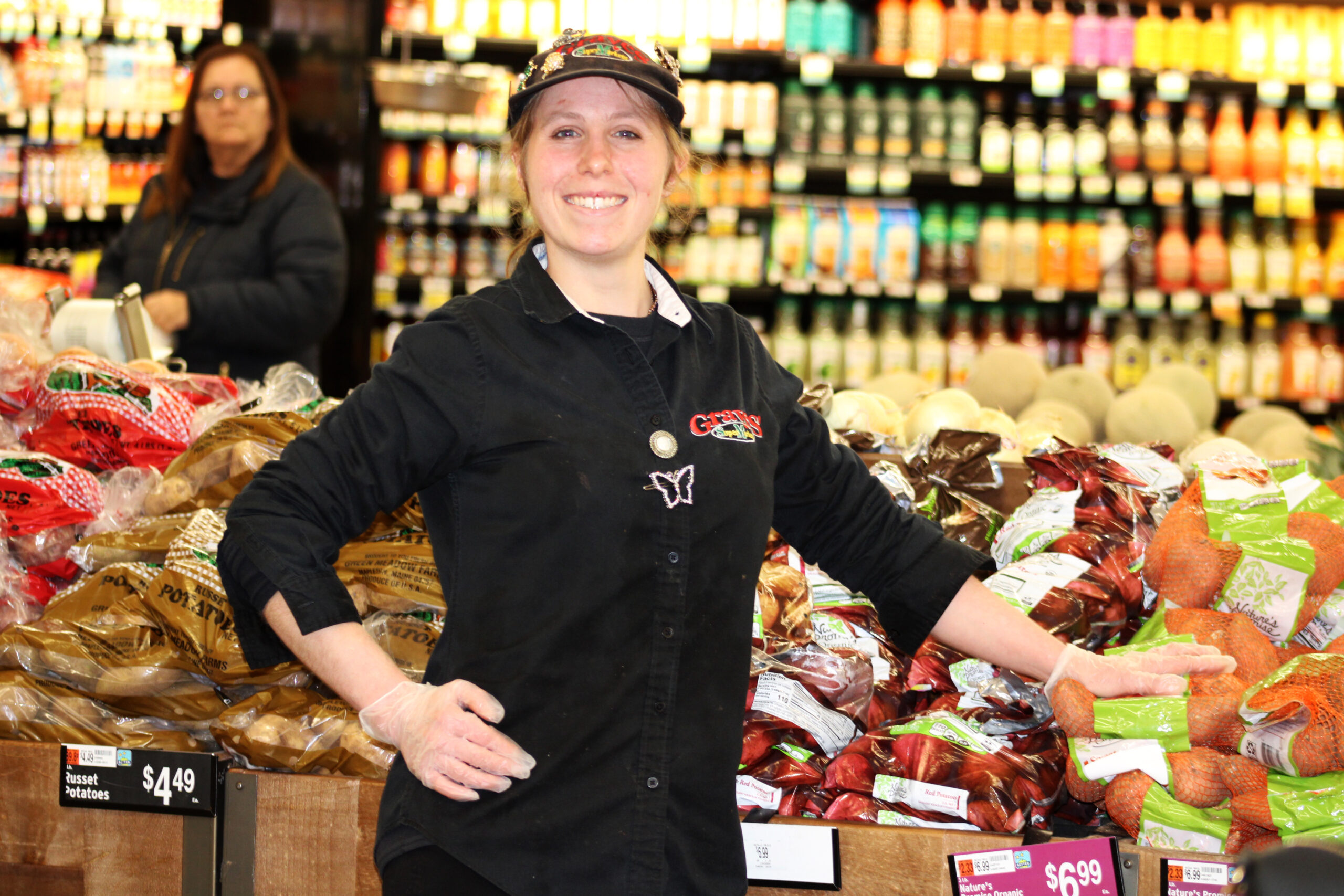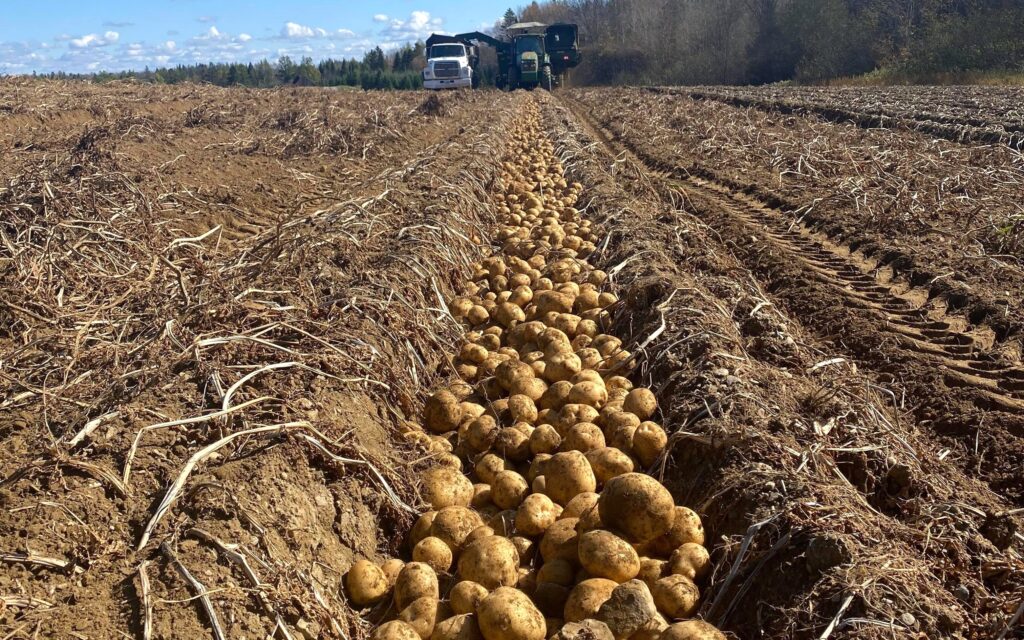
Rising operating costs could soon give a 10-pound bag of potatoes a higher price tag.
Aroostook County agricultural producers have more advanced equipment and technology than ever before, which enables them to farm smarter. But they’re also paying more for electricity to run things like environmentally controlled storage, and for diesel to ship products to market.
Supply chain delays from the pandemic, labor shortages and the rising minimum wage have affected businesses all over Maine. People across the state have also dealt with rising electricity costs, particularly in the last couple of years. So when it costs farmers more to grow a crop, inflation is bound to hit grocery shelves.
“They’re not paying us enough to do what we’re being asked to do, and that’s feed America,” said Dan Corey of Daniel Corey Farms in Monticello and Florida.
Corey said his costs are up exponentially. Diesel and electricity have risen by 50 to 100 percent in the last two years or so.
Diesel is the backbone of expenses, because everything needs to be trucked somewhere, he said. Inflation and higher interest rates have driven his profit margin down, so it costs more to raise a crop.
“It used to cost me $3,000 an acre to put a crop in the ground. Now it’s $6,000 an acre, and no one’s paying me double,” he said.
Though the farm sells primarily seed in Maine, it sells seed and fresh market potatoes in Florida. The business is trying to get the highest price it can to cover production costs but it’s a struggle, Corey said.
Potato prices are holding steady at Presque Isle grocery stores. A 10-pound bag was $6.99 Tuesday, which is the same as last year, Star City IGA Produce Manager Jeremy Ouellette said.
Ten-pound bags of either Russets or round whites were also $6.99 at Graves’ Shop ‘n Save.
At Save-a-Lot, the same size bag was priced at $4.99, similar to last year, with no indication that those prices will rise, Produce Manager Lisa Sinclair said.
Potatoes are Maine’s top food crop, with production valued at $247 million last year, according to the United States Department of Agriculture’s 2022 state report. Milk is second and blueberries third. In 2022, the state produced more than 1.8 billion pounds of potatoes.
Local growers don’t have a lot of control over market price, but need to accept what they can get for their crop, Isaac Braley of Mapleton’s Green Meadow Farms said. He expects about a 10 percent to 15 percent decrease in income this year.

“We’re at the mercy of whatever the market is doing in the United States,” Braley said. “This year, for example, we’re not getting as much for our potatoes as we were a year ago, because the Western states are shipping theirs cheaper.”
Braley’s energy costs have increased about 35 percent to 40 percent in the past two years, which has been difficult. Cheaper Canadian shipping is also affecting local farmers’ bottom lines, he said.
His farm grows 240 acres of mostly tablestock potatoes that are sold directly to consumers.
A bright spot is that his shipping costs have not increased because there are a lot of truckers bidding for jobs, he said.
It should come as no surprise that inflation affects farmers, too, said Maine Potato Board Executive Director Don Flannery.
“They’re seeing the same percentage increases everybody else is, and of course their bills are much higher because they’re using these air systems in these big warehouses,” Flannery said.
Naturally, costs are passed on to consumers because that’s how inflation works, Flannery said. One reason higher prices persist is that the effects of COVID-19 haven’t gone away.
Consider fuel, which skyrocketed during 2020 and 2021 — particularly diesel for trucks and other commercial equipment. Diesel has come down some, but it’s still high, he said.
In March 2022, gasoline in Presque Isle was $4.09 a gallon, with diesel at $5.68. Average prices in Maine Tuesday were about $3.40 a gallon for gasoline and $4.43 for diesel, according to the American Automobile Association. A year ago, gasoline was $3.90 a gallon and diesel, $6.
Like anyone running a home or a business, farmers have battled rising prices of heating and electricity, Flannery said. The costs of labor, too, have risen for employers, and January will bring another minimum wage increase, he said.
Maine’s minimum wage will go up from $13.80 to $14.15 in January, according to the Maine Department of Labor.
This summer, Gov. Janet Mills vetoed a measure that would have included farmworkers under the state’s minimum wage rule, a decision that brought mixed reaction from agricultural groups.
The Agricultural Worker Minimum Wage Committee, which includes the Maine Department of Labor, legislators and agricultural representatives, has been meeting to form wage rules for those working in agriculture. Its next meeting is slated Monday in Augusta.
As far as utilities go, Aroostook County residents saw a 34 percent rise in standard-offer electricity supply rates in 2023. Rates went up from about 11 cents per kilowatt hour in 2022 to 14.8 cents this year, according to the Governor’s Energy Office.
Aroostook customers of Versant Power saw delivery rates rise from approximately 10 to 12 cents per kilowatt hour, according to the Maine Public Utilities Commission. Rates for larger power consumers have risen from 11.4 cents to 15.7 cents per kilowatt hour, and are expected to go from 14.9 cents to 23.4 cents in December.
It isn’t possible to predict when or if potato prices will rise, but if the costs to produce them continue to rise it will surely affect consumers at some point, Flannery said.
“If the grower is going to continue to produce, then that’s going to be reflected,” he said. “Everybody’s got to recover their costs or they’re not going to be in business.”
This story was amended to remove a misplaced dollar sign.







